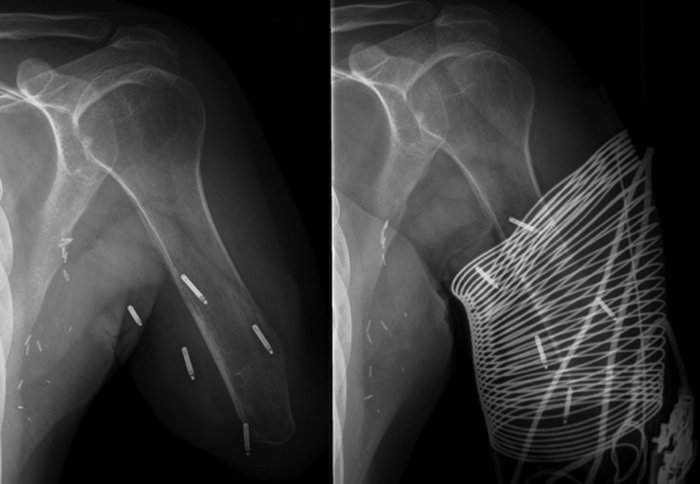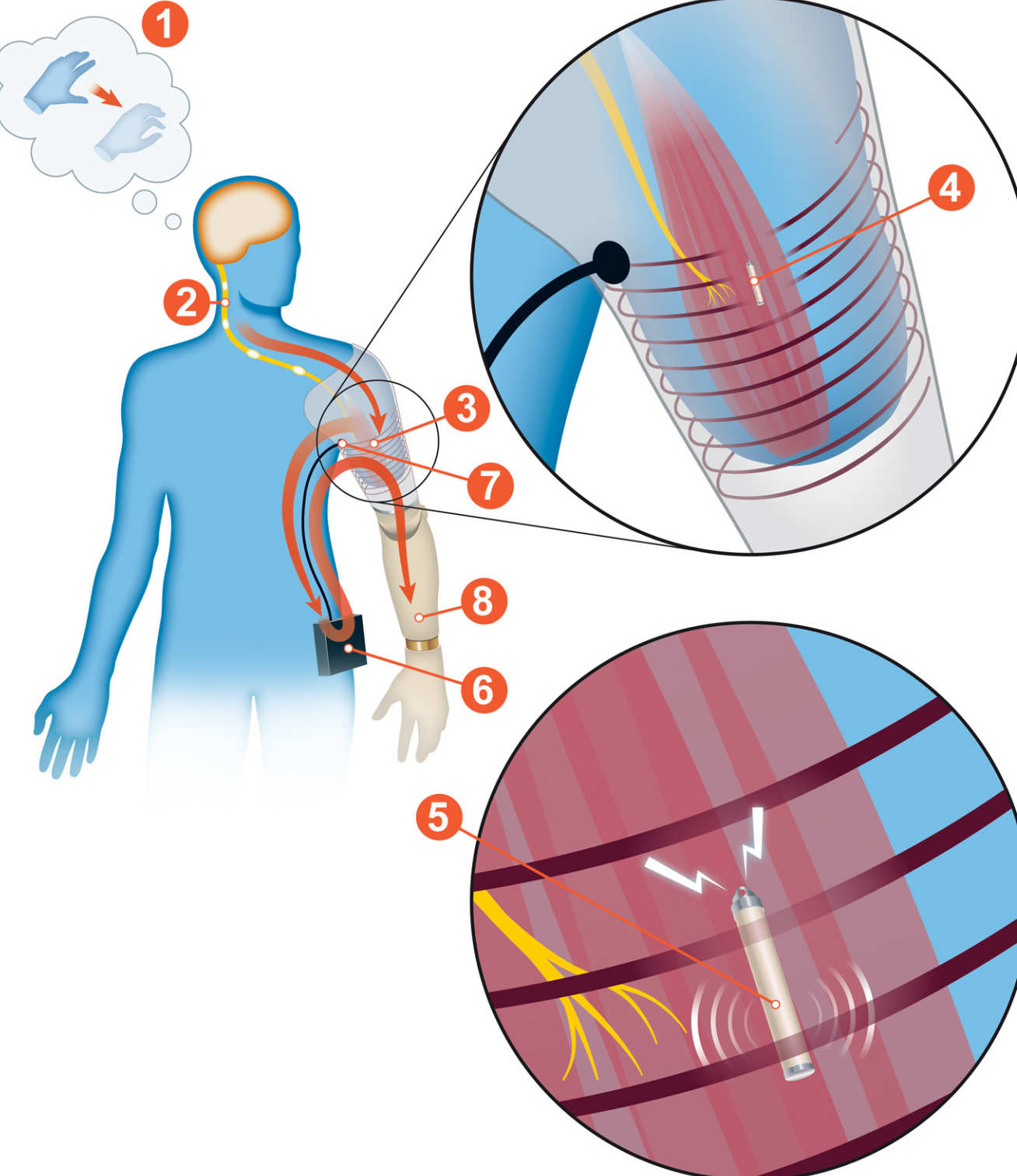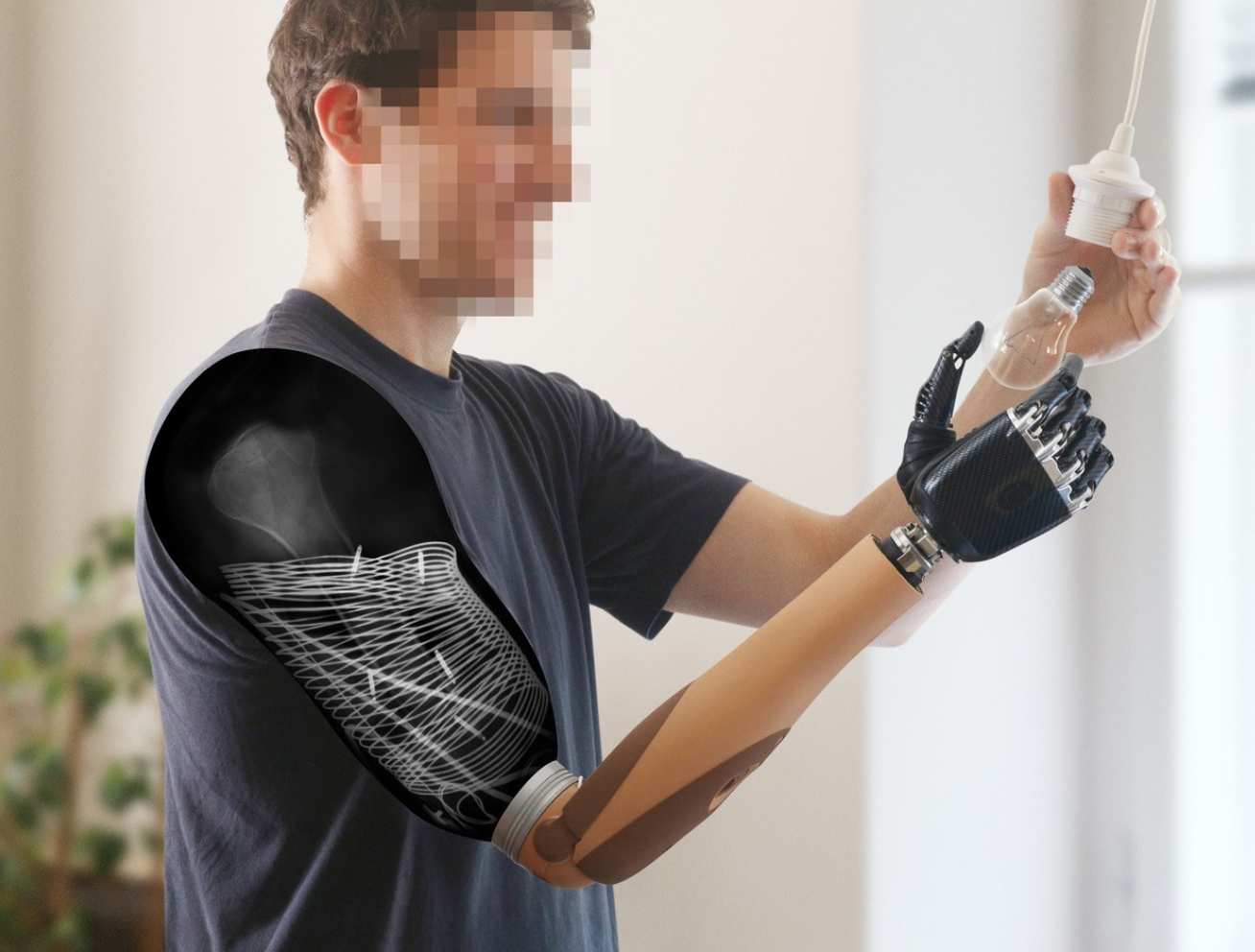
Electrodes implanted in remaining arms give amputees better prosthetic control

Vienna and Imperial College London scientists implanted electrodes in amputees’ stumps for better prosthetic control - with promising results.
This early-stage research, on three men with above-elbow arm amputations, involved relocating nerves in their remaining arms before implanting wirelessly chargeable electrodes and fitting new prosthetic arms.
In the two years after surgery, the patients found they could move their prosthetic arms more easily and with better accuracy and precision. This in turn greatly improved their quality of life.
The researchers say their study, published in Science Robotics and led by the Medical University of Vienna, suggests that combining advanced surgery with cutting-edge technology can benefit people with amputations, and is a promising path for future prosthetic tech.
Co-author Professor Dario Farina, of Imperial’s Department of Bioengineering, said: “Although this was demonstrated in only three people, the results are promising. From here, we hope to test the technique on more amputees to refine our method and make sure it’s fit to be used in more people with amputations.”
Limb loss

Limbs can be surgically removed, or amputated, because of injury or disease. Amputation leaves behind parts of the limb, the ends of which are known as stumps. These retain the original muscles, tendons, and nerves, and are often placed inside the socket of prosthetic arms and legs, which are designed to mimic the movements of natural arms or legs.
Modern prosthetic sockets contain electrodes which detect subtle movements in stump muscles and convert them into movement of the prosthetic arm, leg, hand, or foot.
However, the signals between the stump and the electrodes in the socket are easily disrupted: unusual movement, moisture from sweat, or swelling and rubbing of tissue can all cause malfunction which can be frustrating and embarrassing for patients.
In more advanced fittings, five or six electrodes are placed on the stump for more accurate control of the prosthesis, but they must be so precisely placed to work that the artificial limbs can often malfunction.
In this study, researchers and surgeons at the Vienna and Imperial tested whether implanting electrodes into the stump itself could improve patients’ experience of using prosthetics.

They connected electrodes to nerves and muscles in the stumps to give users more control over movement, and to let the prosthetic ‘feel’ deeper muscles to get a better idea of the precise movements wanted by the user.
They found that patients had far better control of their movements, and the prosthetics themselves followed instructions more reliably via their muscles.
They also found that, despite requiring surgery, rehabilitation took far less time than with current prosthetics. Fitting the socket was easier as there was no need to place surface electrodes between sockets and residual limbs, and sweating didn’t influence the level of control patients had over their prosthetics, or the quality and precision of the movements.
Quality of life
We wanted to address the issues that cause frustration and even embarrassment to users, and ultimately improve amputees’ quality of life. Professor Dario Farina Department of Bioengineering
All participants of the study reported that they preferred the new system and wanted to keep it after the end of the experimental period – and that it worked both in clinic and at home.
Professor Farina said: “Current prosthetics have come a long way since their inception. However, there’s still a lot of room for improvement.
“We wanted to address the issues that cause frustration and even embarrassment to users, and ultimately improve amputees’ quality of life.”
The researchers recruited three men aged 16, 31, and 47 with above-elbow arm amputation - a particularly challenging type of amputation.
Following surgery to relocate nerves to the stump and implant the electrodes, they fitted the prostheses and followed the patients’ progress and their prosthetics’ performance for more than two years. This makes this the first long-term study to combine implantable systems with nerve transfer surgery.
In addition, the scientists plan to further improve the man-machine interface by giving prosthetics the power of sensing their environment.
Professor Farina said: “We know that in healthy individuals, feedback from the prosthetic is very important for amputees to perceive the limb as a part of their own body.
“We hope our work here and in the future will go some way to make this happen.”
The academics will take their technology to this year’s Cybathlon competition in Zurich.
Photo credits: Medical University of Vienna / Science Robotics
The work was funded by the Austrian Federal Ministry of Economy, Family and Youth; the Austrian Council for Research and Technology Development, and the European Research Council (ERC).
“Long-term implant of intramuscular sensors and nerve transfers for wireless control of robotic arms in above-elbow amputees” S. Salminger, A. Sturma, C. Hofer, M. Evangelista, M. Perrin, K. D. Bergmeister, A. D. Roche, T. Hasenoehrl, H. Dietl, D. Farina, O. C. Aszmann published 17 July 2019 in Science Robotics.
Supporters

Article text (excluding photos or graphics) © Imperial College London.
Photos and graphics subject to third party copyright used with permission or © Imperial College London.
Reporter

Caroline Brogan
Communications Division

Contact details
Tel: +44 (0)20 7594 3415
Email: caroline.brogan@imperial.ac.uk
Show all stories by this author



Leave a comment
Your comment may be published, displaying your name as you provide it, unless you request otherwise. Your contact details will never be published.